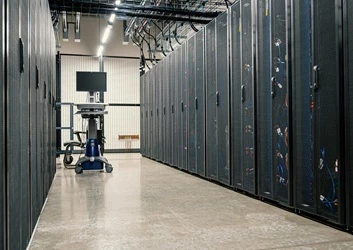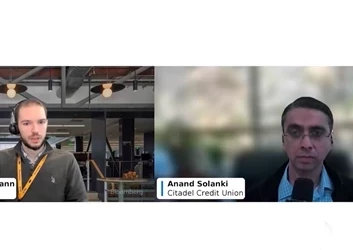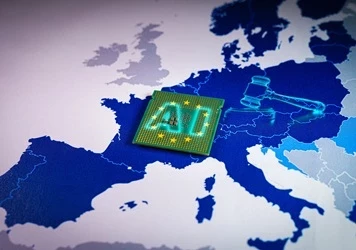Why OpenAI’s bet on AMD is about inference economics, not just supply
Move signals that the AI platform war will be won not just by the company with the best model, but by the company with the most viable infrastructure economics
Add bookmark
OpenAI has signed a multi-year, multi-billion dollar deal to buy AMD’s next-generation GPUs. The market, by and large, saw this news and nodded. The consensus formed quickly: “A smart diversification play.” It’s a prudent, if predictable, move to hedge against Nvidia’s suffocating market dominance and notorious supply constraints.
This consensus is not wrong. It is, however, dangerously incomplete.
To see this deal as only a hedge is to miss the offensive strategy at its core: OpenAI is making a specific technical bet on AMD’s hardware to solve a different problem – the long-term cost of inference. This move signals that the artificial intelligence (AI) platform war will be won not just by the company with the best model, but by the company with the most viable infrastructure economics.
Become a member of the AI, Data & Analytics Network for free and gain exclusive access to premium content including news, reports, videos, and webinars from industry experts. Connect with a global community of senior AI and data leaders through networking opportunities and receive invitations to free online events and weekly newsletters. Join today to enhance your knowledge and expand your professional network.
Join NowThe analytical core: The compounding cost of a query
The public is fixated on training costs, but this is a capital-expenditure rounding error compared to what may be the single biggest economic problem for consumer-scale AI platforms: the eternal, compounding cost of inference.
Inference is the “lights on” cost. It’s the micro-payment, in watts and compute cycles, for every single user query, every word generated, every pixel painted. For a platform serving 800 million users, this micro-cost, when multiplied by billions of daily actions, becomes a tidal wave of operational expense. The winner of this new era will be the one who can ride that wave, not drown in it.
This is where the AMD bet gets specific.
- Nvidia’s H100: The undisputed training king, it features 80GB of high-bandwidth memory (HBM).
- AMD’s MI300X: A precursor to what OpenAI is buying, it features 192GB of HBM.
This memory advantage is the entire thesis. It is not an incremental spec bump; it is a fundamental architectural divergence. That 192GB of local memory allows a single AMD chip to hold an entire, massive, state-of-the-art model – like a Sora-generation model or a complex, multi-modal agent – in its own memory.
To run that same model, Nvidia’s 80GB chips require “tensor parallelism.” This means the model’s “brain” must be literally sawn apart and distributed across multiple chips. While functionally possible, this process is a mess of complexity. It introduces latency, which degrades the user experience. It creates a dozen new points of failure. Most importantly, it requires a standing army of some of the world’s most expensive engineers to debug, optimize, and maintain.
For a consumer-scale platform, this complexity translates directly into a higher, non-competitive cost of goods sold (COGS). AMD’s architecture, by contrast, presents a path of radical simplicity: one model, one chip. It is an elegant, cost-efficient path to solving the inference problem at scale.
Register for All Access: AI in PEX 2026!
De-risking the bet: 3 counter-arguments
This bet is not a sure thing. It carries three obvious and massive risks, which OpenAI’s strategy appears to have explicitly analyzed and addressed.
1. The CUDA Moat
Nvidia’s true moat is not its silicon; it is CUDA, its decade-deep software ecosystem. It is the programming language, the set of libraries, and the developer mindshare that 99 percent of the AI world is built on. For nearly any other company, the engineering cost of porting code away from CUDA would be suicide.
OpenAI, however, is one of the only players on earth (along with Google and Meta) that can afford to pay this switching cost. With its in-house compiler teams and own open-source compiler, Triton, it has the tooling to create a hardware-agnostic layer. It can invest the one-time, nine-figure engineering capital to abstract the hardware, thereby unlocking the long-term, compounding savings from AMD’s superior inference economics.
2. Nvidia’s inevitable roadmap
This 192GB memory advantage is not permanent. Nvidia’s next-generation Blackwell (B100, GB200) platform will close this gap.
However, OpenAI’s strategy isn’t about winning a 10-year hardware war. It’s about winning the two-year platform war. We are in the critical land-grab phase of the new internet. OpenAI’s bet is that this AMD deal secures a crucial 12-to-24-month window of superior inference economics. This window allows it to scale its “Walled Garden” – the Sora app, the AgentKit – and achieve market escape velocity, all while competitors are still stuck with higher costs or waiting in line for Nvidia’s next chip.
3. AMD’s execution risk
This is the weakest link. AMD has a long, painful history of promising competitive products but struggling with drivers, software, and reliable supply at scale. OpenAI is not naive. It solved this problem not with hope, but with governance.
Register for All Access: Agentic AI 2026!
The governance moat: Warrants as “golden handcuffs”
The most sophisticated, and least understood, part of this deal is the stock warrant structure.
OpenAI is earning the right to acquire up to 10 percent of AMD (160 million shares) as it hits its purchase milestones. This is not a bonus for being a good customer. This is collateral.
It’s a “golden handcuff” that binds AMD’s fate to OpenAI’s. By tying its own financial success to AMD’s, OpenAI turns a simple, transactional supplier relationship into a deep strategic partnership. This warrant structure ensures that when OpenAI calls, AMD’s CEO answers. It guarantees that AMD’s best engineers are on their account and that their supply chain is prioritized above all others. It is the governance tool that de-risks the entire technical bet.
The payoff: Fuel for the “walled garden”
This brings us to the ultimate “why.” Why make this complex, expensive, high-risk bet? Because this secured, low-cost compute is the fuel for OpenAI’s “walled Garden.”
This infrastructure is what will power:
- The “Sora app” feed, designed to compete directly with TikTok.
- The “AgentKit” ecosystem, designed to compete with Apple’s App Store.
- The “InstantCheckout” rail, designed to compete with Amazon.
This confirms the core thesis: the platform war is a cost war. To get 800 million free users and millions of creators to live in your ecosystem, your inference costs need to be as close to zero as possible. This AMD deal is the move that makes this ambition economically viable. It is how they ensure their “automated” systems are so cheap and reliable that they feel artificial.
While Google builds ecosystem leverage (like Gemini 2.5 “Computer Use”) to help other companies, OpenAI is building its own fortress. This AMD deal is how they’re paying for the bricks.
What this means: The 3 economies
This move reveals the three distinct strategic positions for founders in the new AI ecosystem. This is not just analysis; it is a call for strategic review.
- Platform inheritors: (founders building apps on OpenAI’s APIs). This deal is fantastic news for you. OpenAI is absorbing the infrastructure cost and risk, allowing you to inherit their world-class inference economics. Your action: Stop worrying about compute. Focus 100 percent of your resources on user experience, distribution, and solving a unique business problem.
- Platform competitors: (rival foundational model labs). This deal should trigger an immediate, red-alert strategic review. You must now compete not only with OpenAI’s models but also with their superior, and now diversified, cost structure. Your action: Ask your team today: Do we have our own chip strategy? Can we negotiate similar governance rights with a vendor? Or do we need to radically simplify our architecture to compete on inference efficiency?
- Niche specialists: (founders fine-tuning open-source models). Your path is now clearer. You cannot win on scale. You must win on efficiency and precision, running specialized, cost-effective models that don’t require a 192GB chip. Your action: Double down on specialization. Your moat is building the best, most efficient model for a single, high-value vertical (e.g. legal, medical) that a 1.8-trillion-parameter goliath will always be too slow and too expensive to serve.
The dual-pillar moat
This wasn’t a defensive hedge. It was an offensive move to build a cost-efficient, high-performance moat around the inference capacity that its agentic future depends on.
While the rest of the market is in a “Nvidia-or-bust” mindset, OpenAI is quietly building a dual-pillar compute empire. They’ve secured the (training) king and invested in the (inference) challenger. For founders, the lesson is clear: your strategy is only as strong as the infrastructure it runs on. OpenAI just made sure theirs is built to last.
Pioneering the Next Era of Intelligence

Join All Access: AI, Data & Analytics 2025. A free webinar series streaming live November 4, 2025, designed to guide you in integrating AI effectively.
Learn from industry experts on identifying opportunities, managing risks, and making strategic AI and data investments. Key themes include Decision Intelligence, AI and Data Governance, and Scaling GenAI and ML Operations.

























